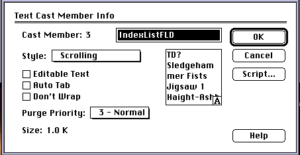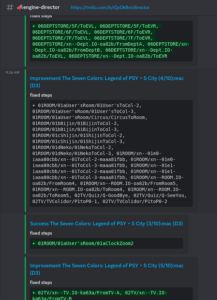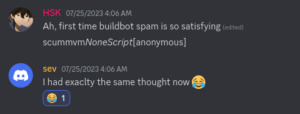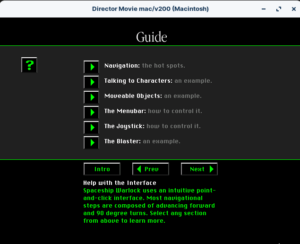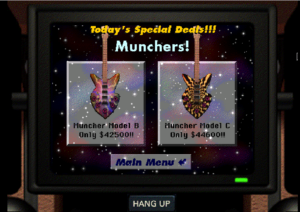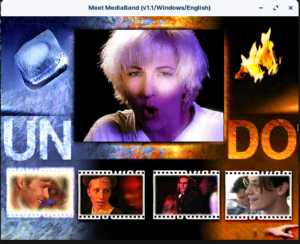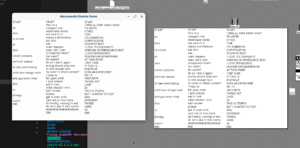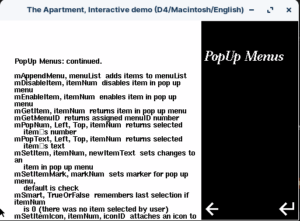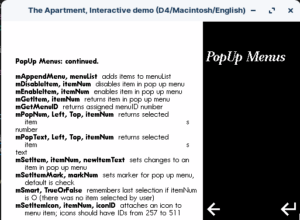Greetings, as you might have already guessed, this is the last blog post for this beautiful journey of GSoC’23, These last 3 months were amazing, and I would like to wrap it up by writing this final report!
My Introduction
I am Harishankar Kumar, a final-year student (at the time of writing), and working past three months on adding more support to the Director Engine, ScummVM implements a kind of Virtual Machines to support numerous engines, In these many engines the one which I was also working to add more support is called Macromedia Director
My work was to implement support for game titles like “Total Distortion”, “Journeyman Project”, “Meet Mediaband”, Now the thing was that ScummVM was already capable of running these titles however there were bugs and glitches which needed to be fixed before labeling these title as compatible!
What’s been done
According to the proposal, “total-distortion” right now is playable, a lot of work has been put into it and many bugs have been fixed. “meet-mediaband” has also progressed quite further due to adding UnDo Me, This in total added fixed lot of bugs, reimplemented core of Director engine and progressed it closer to what the original engine was like!
What’s left
In general, no amount of progress is ever sufficient as new bugs keep popping up, regressions that needs to be fixed, etc! But in my tenure what’s left to do:
- Total Distortion is yet to be fully playable, many small bugs are yet to be fixed and the end needs to be tested thoroughly
- Much work is left for meet-mediaband as well
- Journey Man Project is almost untouched
My work
In short, all my work can be summarized by these blog posts and the PR’s attached with them:
29th May – 31st May
Implementing Mac Styled PopupMenu’s, First PR After GSoC Accepted!
1st June – 30th June
PR Merged – #5074
1st July – 31st July
PR Merged – #5158 #5136 #5152 #5153 #5156
PR Merged – #5191 #5190 #5176 #5178 #5196
1st August – 21st August
The End
It was a beautiful and fun journey, these last three months were filled with endless learning and I couldn’t express how much grateful I am for being given this opportunity! The community is very impressive with lots of helpful members, for anybody looking to contribute, I would totally 200% recommend them!
Moreover, although GSoC is coming to an end however, I am planning to become a member of the Director Engine team and continue my contributions in the future, so expect occasional blogs and my presence in #engine-director channel!
With that being said, here’s the hall of fame, and my heartful gratitude to these people for being part of this project:
Hall of Fame (My gratitude list)
- Sev (Eugene Sandulenko) – First and foremost, Eugene, as my mentor, is probably one of the best people who have guided me. honestly, I didn’t expect any learning outside anything related to this organization (ie I expected to learn more about C++ ONLY) but to my surprise, the amount of growth I have seen in myself is surprising to me, in these three months I have learned from basic skills like communication, to how to use
git, how to develop efficiently, to even reading gdb stack traces!!I am really thankful for the patience, and for not giving up on me despite so many mistakes, etc! The only reason I got my proposal selected, to complete this project (If I will be passed) will be amazing super-mentor Sev! - My friends and Family – These last three months, I was especially very busy, didn’t pick up anybody’s call, super-duper unavailable! So shoutout to all my friends for understanding this and being there in support whenever needed, I am so grateful for them that here are some mentions to each of them
- Sahil Kadiyan – My best roomie who inspired me to work, a source of endless motivation and energy that pushed me through to do something with my career (and that’s how I found GSoC)
- Radhika Agrawal – For understanding my unavailability in all these hard times, and for being there for me in thick and thins!
- Abhinandan Singla – For managing all the other projects, and academic work, so I wouldn’t feel academic pressure while working for GSoC, He was a lifesaver.
With that being said, I look forward to submission and the final evaluation results! It was a great tenure and I will continue my support to this wonderful of an organization through more long-term contributions!

